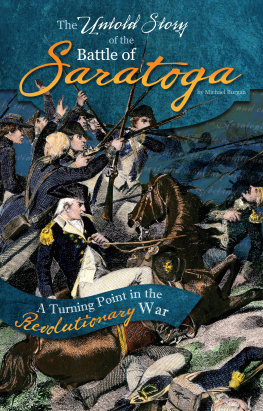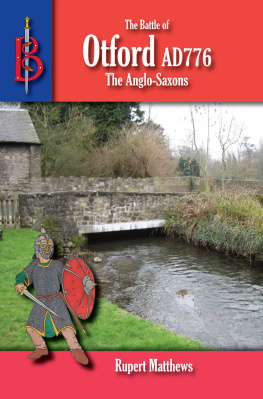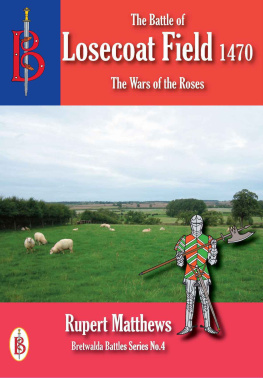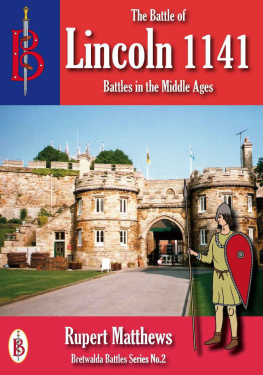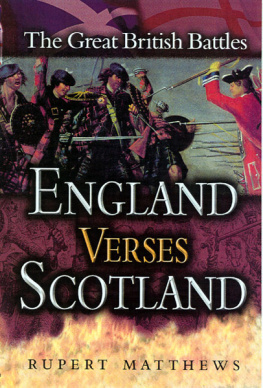Rupert Furneaux - Saratoga: The Decisive Battle
Here you can read online Rupert Furneaux - Saratoga: The Decisive Battle full text of the book (entire story) in english for free. Download pdf and epub, get meaning, cover and reviews about this ebook. year: 2021, publisher: Routledge, genre: History. Description of the work, (preface) as well as reviews are available. Best literature library LitArk.com created for fans of good reading and offers a wide selection of genres:
Romance novel
Science fiction
Adventure
Detective
Science
History
Home and family
Prose
Art
Politics
Computer
Non-fiction
Religion
Business
Children
Humor
Choose a favorite category and find really read worthwhile books. Enjoy immersion in the world of imagination, feel the emotions of the characters or learn something new for yourself, make an fascinating discovery.
- Book:Saratoga: The Decisive Battle
- Author:
- Publisher:Routledge
- Genre:
- Year:2021
- Rating:3 / 5
- Favourites:Add to favourites
- Your mark:
- 60
- 1
- 2
- 3
- 4
- 5
Saratoga: The Decisive Battle: summary, description and annotation
We offer to read an annotation, description, summary or preface (depends on what the author of the book "Saratoga: The Decisive Battle" wrote himself). If you haven't found the necessary information about the book — write in the comments, we will try to find it.
Saratoga: The Decisive Battle — read online for free the complete book (whole text) full work
Below is the text of the book, divided by pages. System saving the place of the last page read, allows you to conveniently read the book "Saratoga: The Decisive Battle" online for free, without having to search again every time where you left off. Put a bookmark, and you can go to the page where you finished reading at any time.
Font size:
Interval:
Bookmark:
ROUTLEDGE LIBARY EDITIONS: HISTORICAL SECURITY
Volume 4
SARATOGA
SARATOGA
The Decisive Battle
RUPERT FURNEAUX

First published in 1971 by George Allen & Unwin Ltd
This edition first published in 2021
by Routledge
2 Park Square, Milton Park, Abingdon, Oxon OX14 4RN
and by Routledge
52 Vanderbilt Avenue, New York, NY 10017
Routledge is an imprint of the Taylor & Francis Group, an informa business
1971 Rupert Furneaux
All rights reserved. No part of this book may be reprinted or reproduced or utilised in any form or by any electronic, mechanical, or other means, now known or hereafter invented, including photocopying and recording, or in any information storage or retrieval system, without permission in writing from the publishers.
Trademark notice: Product or corporate names may be trademarks or registered trademarks, and are used only for identification and explanation without intent to infringe.
British Library Cataloguing in Publication Data
A catalogue record for this book is available from the British Library
ISBN: 978-0-367-61963-3 (Set)
ISBN: 978-1-00-314390-1 (Set) (ebk)
ISBN: 978-0-367-65042-1 (Volume 4) (hbk)
ISBN: 978-1-00-312760-4 (Volume 4) (ebk)
Publishers Note
The publisher has gone to great lengths to ensure the quality of this reprint but points out that some imperfections in the original copies may be apparent.
Disclaimer
The publisher has made every effort to trace copyright holders and would welcome correspondence from those they have been unable to trace.
SARATOGA
The Decisive Battle
RUPERT FURNEAUX

FIRST PUBLISHED IN 1971
This book is copyright under the Berne Convention. All rights are reserved. Apart from any fair dealing for the purpose of private study, research, criticism or review, as permitted under the Copyright Act, 1956, no part of this publication may be reproduced, stored in a retrieval system, or transmitted, in any form or by any means, electronic, electrical, chemical, mechanical, optical, photocopying recording or otherwise, without the prior permission of the copyright owner. Enquiries should be addressed to the publishers.
Rupert Furneaux 1971
ISBN 0 049 73005 3
PRINTED IN GREAT BRITAIN
in 11 point Baskerville type
BY BILLING & SONS LIMITED
GUILDFORD AND LONDON
Acknowledgements
I acknowledge with many thanks the assistance of the staff at Saratoga National Park, who conducted me over the battlefield, which they are endeavouring to recreate fully in conformity with the battles fought on September 19th and October 7th, 1777. During my visit, at the time of year of these battles, I toured the area, visiting also the battlefields at Bennington, Hubbardton, and Fort Ticonderoga.
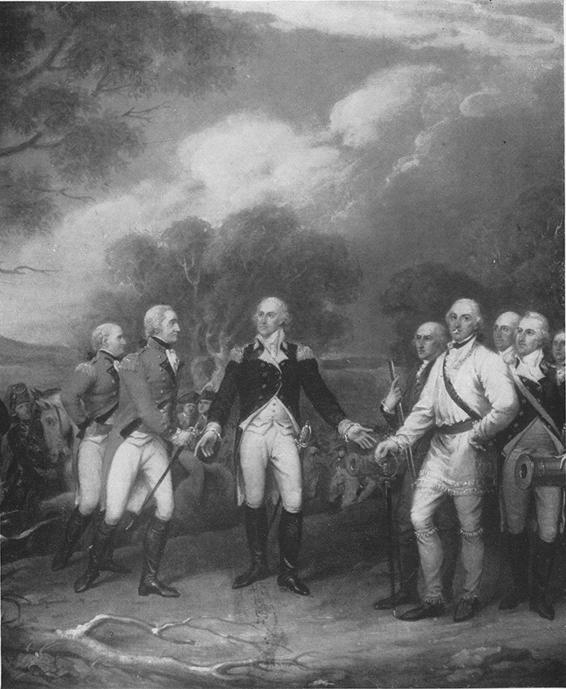 Section from a painting by John Trumbull (1756-1843) now in the Yale University Art Gallery.
Section from a painting by John Trumbull (1756-1843) now in the Yale University Art Gallery.
Contents
ACKNOWLEDGMENTS
I. London
II. Montreal
III. St Johns
IV. Fort Ticonderoga
V. Mount Defiance
VI. Hubbardton
VII. Fort Edward
VIII. New York
IX. Fort Stanwix
X. Bennington
XI. The Hudson
XII. Swords Farm
XIII. Freemans Farm
XIV. Neilsons Barn
XV. The Highlands
XVI. Bemis Heights
XVII. Saratoga
XVIII. Cambridge (Mass.)London
BIBLIOGRAPHY
INDEX
Illustrations
Surrender of General Burgoyne at Saratoga frontispiece
1. General John Burgoyne
2. Daniel Morgan
3. Horatio Gates
4. Philip Schuyler
(a) Fort Ticonderoga, with Lake Champlain and Lake George
(b) Fort Ticonderoga and Lake Champlain
(a) Major-General Arthur St Clair
(b) Major-General Benedict Arnold
(a) American riflemans uniform
(b) North American soldier
(a) C.O. Washingtons Life Guard
(b) Uniform of 62nd British Regiment
(c) Uniform of a Brunswick Dragoon
9. Panorama of the battlefield, October 1777
(a) Looking eastward from the Visitors Centre, Saratoga
(b) Looking eastward from the Great Redoubt
11. View eastwards to Freemans Farm
(a) Panoramic view of the battlefield
(b) John Neilson House
(a) Storming of Breymann Redoubt
(b) Morgan rallies his riflemen
14. Death and burial of General Fraser
MAPS
1. The Invasion of New York State
2. The Battle of Freemans Farm
3. The Battle of Bemis Heights
I London
Leaving his army in Canada on the pretext that he needed to deal with his private affairs and to take his seat in Parliament, Lieutenant-General Sir John Burgoyne came to London in mid-December 1776 to advocate a plan whereby the rebellious American colonists might be dealt a decisive blow, and his own ambition furthered. His ability to talk well made his plan sound easy of accomplishment, especially to the ears of men who were eager to grasp a solution to an annoying difficulty: Sir William Howe, the Commander-in-Chief in America had unexpectedly changed his plan of campaign. Howes letters, which by the slow communications of the period took two months to cross the Atlantic, placed Lord George Germain, the Secretary of State for the Colonies, in a quandary to which Burgoyne supplied the answer. He did far more than that, for he offered Germain the best of both possible worlds.
The correspondence shows how the Grand Strategy, the imaginative plan to end the war by one decisive blow, was allowed to deteriorate into an ineffective sideshow, which culminated in one of Britains greatest military disasters.
The question Who blundered? is not easy of solution, for it requires the somewhat tedious examination (without which the campaign is incomprehensible) of the letters that passed between the three men: the secretive and taciturn Howe; the ebullient and ambitious Burgoyne; and the allegedly indolent and maladroit minister who is supposed to have stranded Burgoyne alone and unaided in the American wilderness, the long-discredited Germain. The last of these became the victim of the malice of his political enemy, Lord Shelburne, who concocted the ludicrous story of the pigeon-holed despatch, which made him the laughing-stock of several generations.
The war for American independence (which Germain proverbially lost) was two years old.
The rebellion of Britains American colonists began in 1775. Their desire for independence dated back to 1763, when, relieved from fear of French aggression by Britains great victory in the Seven Years Warthe decisive campaigns of which had been fought at their back door and in which they had played a conspicuous partthey sought freedom to run their lives without interference from the mother country.
Today, we find the colonists attitude is understandable, and the coercive policy pursued by the government of King George III indefensible. Some Americans wanted what we would now call dominion status, the device by which a Commonwealth of independent nations is held together by common allegiance to the Crown. But, in 1774, there was no constitutional means by which such a desire could be satisfied, and no inclination to adopt it. The English had won a great empirewhich they had not yet learned to administerat enormous cost, to which they asked the Americans, the chief beneficiaries of the war, to contribute. The colonists recognized their indebtedness but, on good constitutional grounds, refused to be taxed without representation. When Parliament imposed duties, the angry Bostonians tossed a cargo of tea into the sea.
Next pageFont size:
Interval:
Bookmark:
Similar books «Saratoga: The Decisive Battle»
Look at similar books to Saratoga: The Decisive Battle. We have selected literature similar in name and meaning in the hope of providing readers with more options to find new, interesting, not yet read works.
Discussion, reviews of the book Saratoga: The Decisive Battle and just readers' own opinions. Leave your comments, write what you think about the work, its meaning or the main characters. Specify what exactly you liked and what you didn't like, and why you think so.


